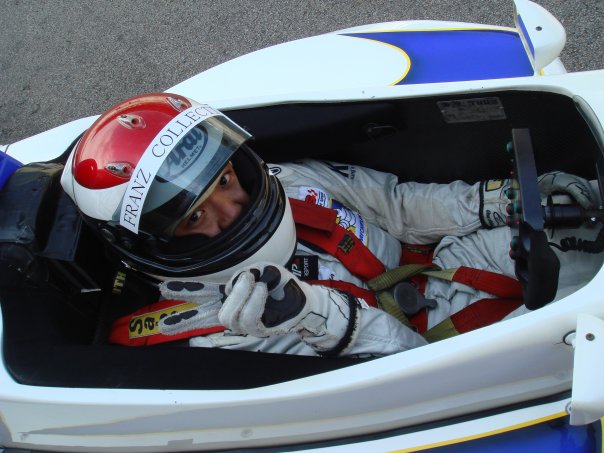
A while back, we wrote an article about the latest evolution of online virtual racing, and you can check that out here: iRacing 101: The Ins and Outs of iRacing
Now we’re going to take a closer look at some of the hardware you’ll need to start building a pro-spec racing simulator rig.
And to do that, we’ve enlisted the help of Howard Yang.
LISTEN TO THE PODCAST EPISODE BELOW!
Not only is Howard the founder of GTR Simulator, he’s an experienced racer with plenty of seat time in the cockpit of serious race cars, particularly in the former Grand Am Road Racing Series.
Now retired from racing, Howard spends his time designing professional-spec racing simulators. Better still, he’s got a Rolodex full of current race car drivers that he calls upon to offer insight into his racing sim development.
In fact, Howard says the whole idea for GTR Simulator came about as he was looking for a way to practice, without the need (or expense) to log a bunch of seat time in a real race car.
And as you’d imagine, in order be used as a legit practice tool, the racing simulation has to be as authentic as possible.
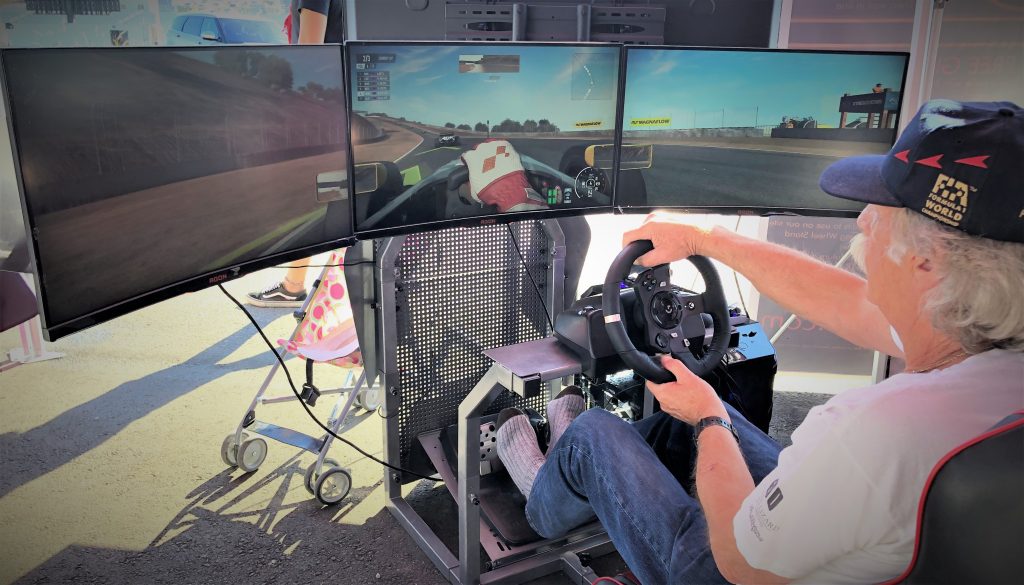
What is a Racing Sim?
If your last experience with a racing simulator is feeding quarters into the Pole Position machine at your local laundromat, prepare yourself for a quantum leap in realism here. In fact, you should probably go check out that article on iRacing that we linked to in the beginning of this story to see what we mean.
Go ahead and scroll up to read it—we’ll wait.
But software with hyper-realistic graphics, authentic sounds, and accurate handling characteristics is only part of the story here—you still need a competent apparatus to experience it with.
That’s where a good racing simulator rig comes in.
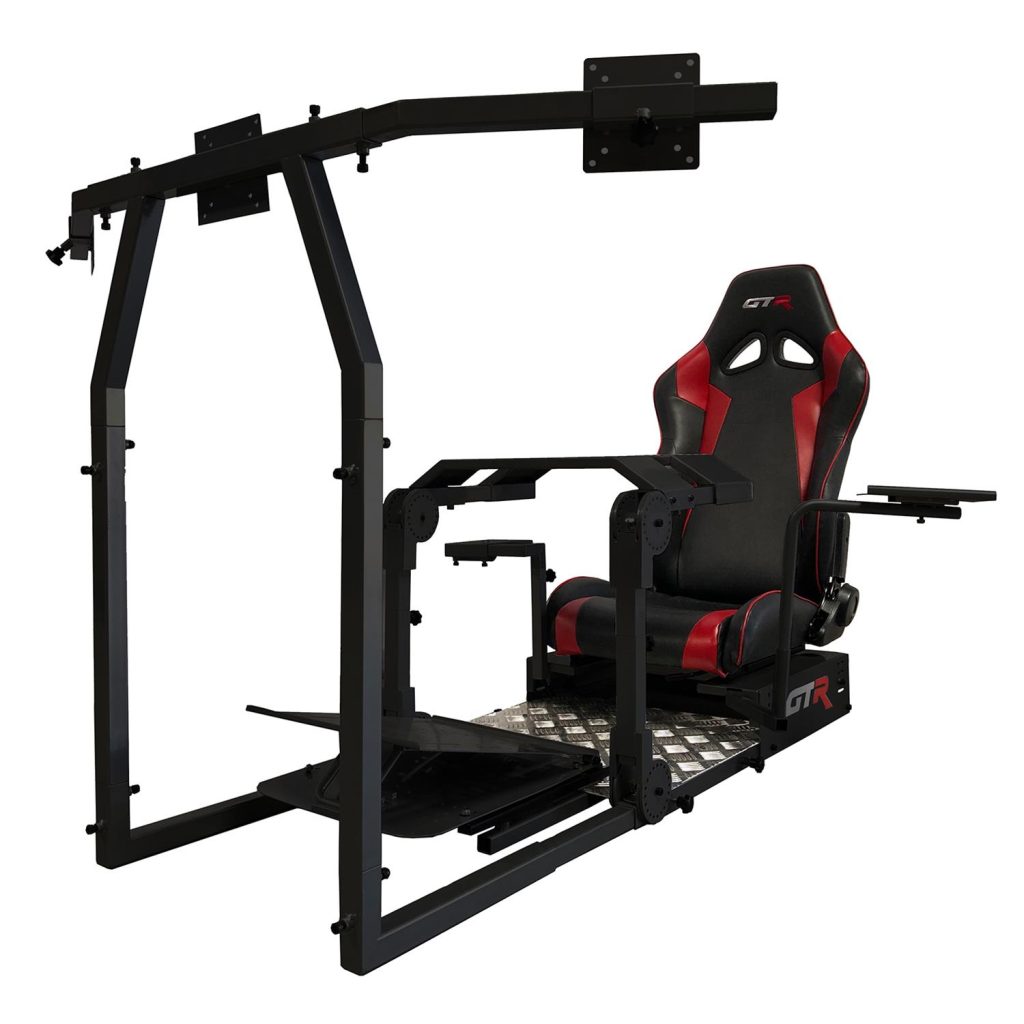
Howard uses the word “rig” to refer to the structural apparatus that holds the driver, along with the related peripherals, like the steering wheel, pedals, monitors, etc.
And to better understand it all, Howard breaks a simulator rig down into two distinct components:
The first part is the racing simulator controls. (We’ll go over things like steering wheels, pedals, and handbrakes in detail momentarily.)
The second is the frame and the simulator seat. And Howard stresses the importance of having a sturdy, rigid support system that allows the driver to be seated in an authentic driving position for a truly immersive simulator experience. (If you’ve ever squished your body into anything resembling a Formula car, then you already know what we’re talking about here.)
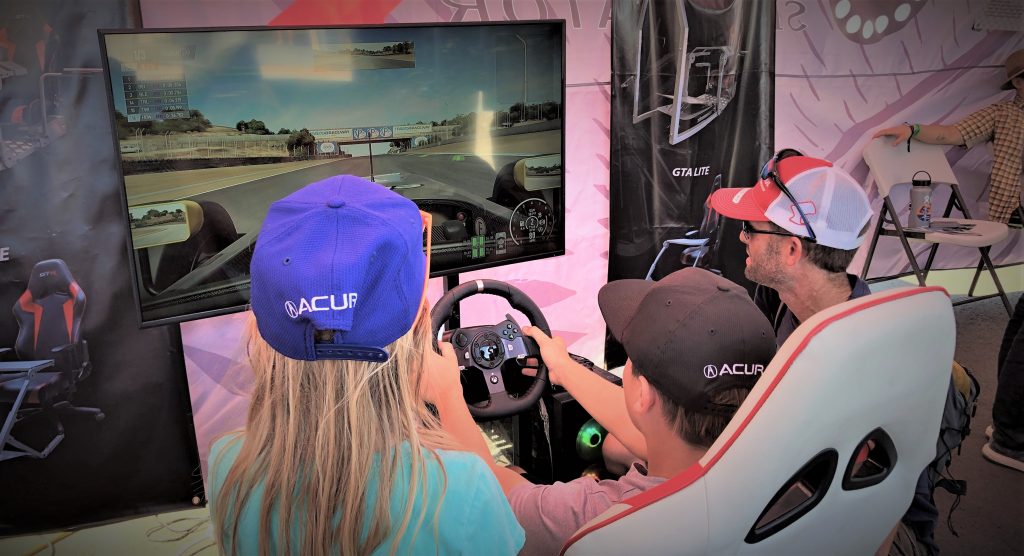
What Should You Know Before Buying a Racing Sim
First and foremost, Howard explains, you should figure out what you’ll be using your rig for. Are you a gamer who’s going to be racing friends on a random weeknight? Or are you grassroots/pro racer using it to train for your next race or track day?
The answer to that question will go a long way towards establishing your budget.
While Howard admits that GTR Simulator components are targeted to more serious racers (using plenty of stainless steel and other durable materials in their construction), he explains that his company’s GTA and GTA Pro rigs are modular so you can always upgrade parts later as your interest in racing sims grows.
And he isn’t shy about recommending some more economical options for casual gamers, from brands like Logitech.
Currently, GTR Simulator peripherals (pedals, wheel, etc.) are designed for a PC, yet there are adapters available to use them with dedicated game consoles like the PlayStation and xBox.
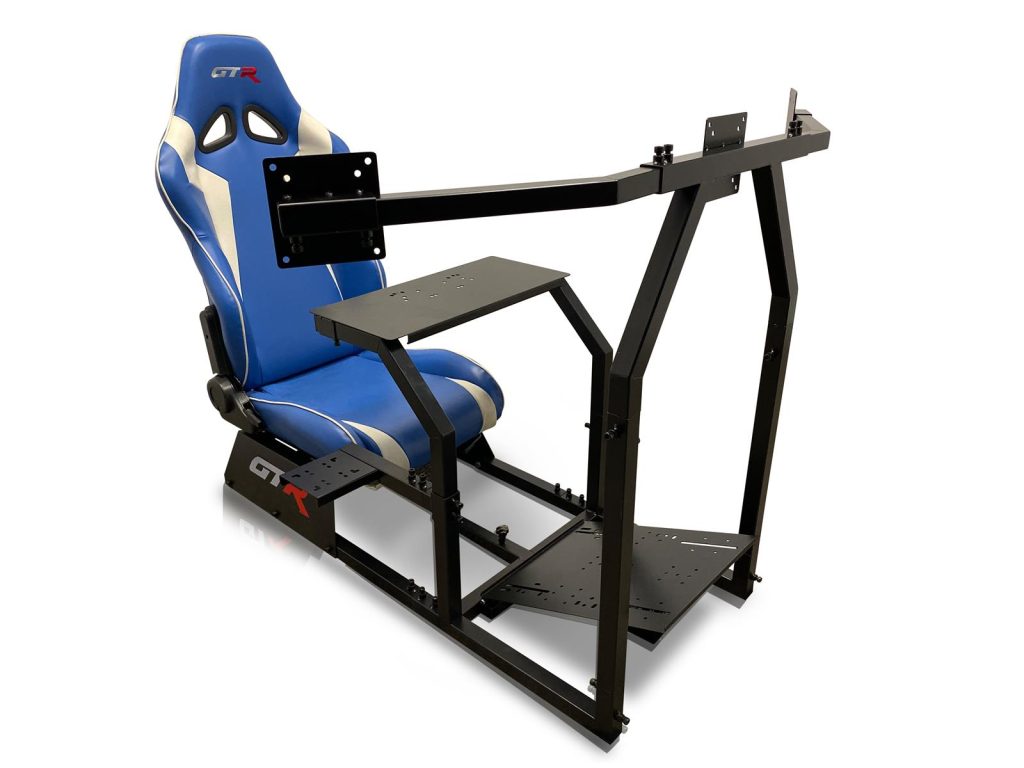
Howard does recommend finding a sim with some adjustability though. As an example, many of GTR Simulator’s rigs can be adjusted down enough to accommodate a young child. Not only does that adjustability mean more folks can use the sim, it allows the rig to “grow” along with the user.
Not a Video Game, A Legit Practice Tool
Remember, Howard’s a former Grand Am driver himself and the genesis of GTR Simulator was to find an economical way to log practice time without going to a track. So we asked Howard to describe how a racing simulator can help you become a better driver.
“With a simulator you can get a feel of where the braking point is, where the turning point is,” he says, alluding to how a sim can help you learn a specific track. It’s also a great way to establish and memorize the best racing line for a particular course as well, Howard tells us.
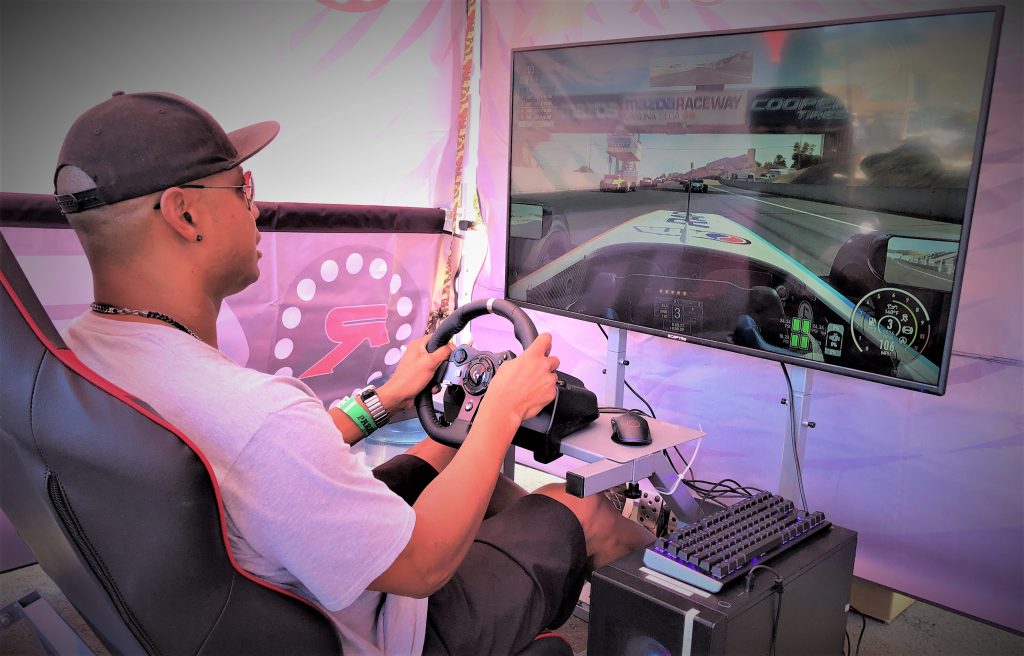
Though Howard also explains that a simulator can’t really replicate the G-forces you’re going to experience in a real track environment. And outside of getting your timing down, a sim won’t be much help for drag race practice, where traction and rapid weather changes simply can’t be simulated—for now, anyway.
But he does go on to explain how tech advancements behind force feedback and analog controls are able to increasingly mimic a real driving feel with more and more accuracy, so let’s dive into those topics for a sec.
Understanding Force Feedback, Analog Controls & “Motion” Sims
“When you’re cruising down a highway and hit a pot hole, your hand will feel a jerk on the steering wheel, turning your car either to the left or the right,” Howard explains. “And you have to grab the wheel to make sure your car continues straight.”
With a good force feedback steering wheel, that same thing will happen with a simulator. Howard describes how hitting gravel or crossing track rumble strips will result in an authentic vibration or pull in the simulator’s steering wheel, thanks to tiny, powerful gear-driven motors built into the controls.
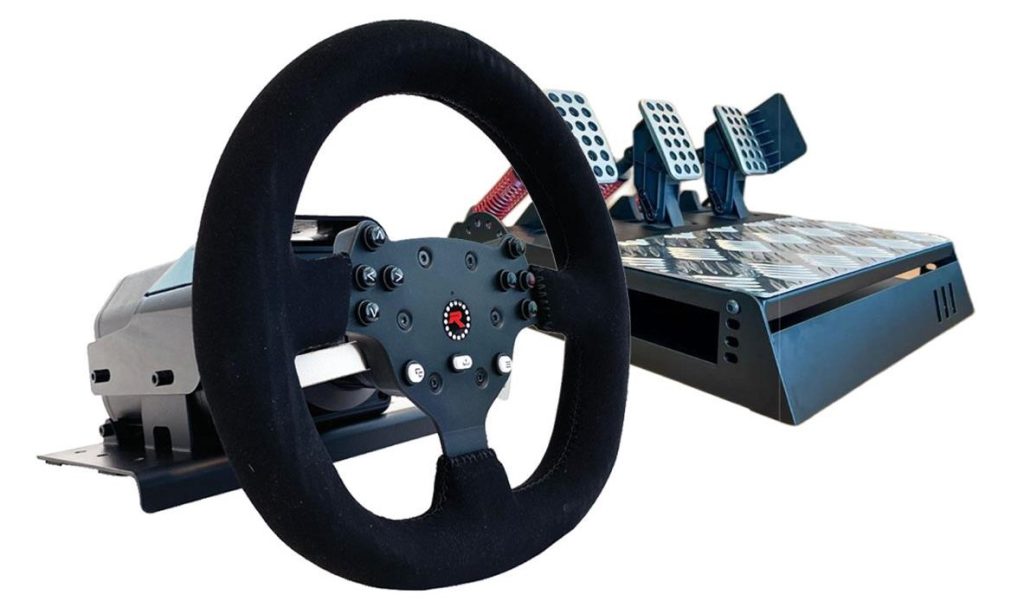
While more subtle, analog controls are just as valuable for an authentic simulator experience. Recall an old video game like Pole Position or Dragster, when you press a button or move the joystick, it’s a simple on/off signal with no middle ground—you can’t modulate the pedal or do a minor steering wheel correction.
But with analog controls you can.
In particular, Howard references GTR Simulator’s clever handbrake controller. He describes how an innovative system of magnets and sensors allows the user to manipulate the brake lever as you would in, say, a real rally car with continuously variable input as you power through a turn. Same deal with an analog steering wheel and pedal setup—they let you feather the throttle or make small steering corrections to further enhance the realistic driving experience.
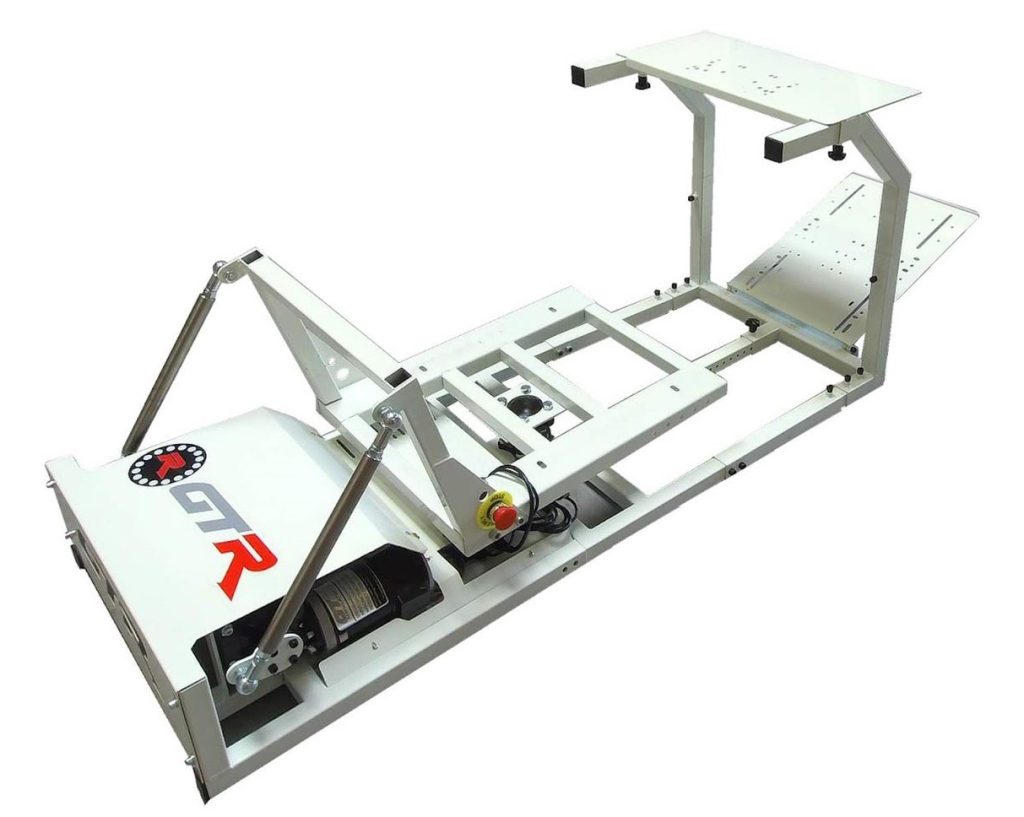
Briefly, we should talk about “motion” simulators here too. This is where the seat physically moves in response to the driving conditions. IE, when you turn left, the seat will shift left, or when you slam on the brakes, the seat will lurch forward to simulate the car’s shift in weight. GTR Simulator makes motion sims, as do other companies, and they deliver an incredible sensory racing experience.
But as you’d imagine, these advanced motion simulators are tailored to the professional driver and/or serious gamer and, as such, aren’t exactly for the budget-minded, entry level racer. Since this is more of a 101-style article intended for those new to whole racing simulator thing, we won’t spend much time covering them here.
Monitor vs. TV vs. VR Headsets for Your Racing Sim
Howard tells us that one of the last big decisions you’ll need to make when building your racing simulator rig is whether to outfit your display with computer monitors, standard flat screen televisions, or virtual reality goggles.
Howard admits that he’s not a big fan of virtual reality glasses. “After about 30 minutes, I get dizzy,” he laughs. But he does tell us that plenty of folks do go that VR goggle route.

In regard to the TV vs. monitor debate, Howard says there are pros and cons. While standard box-store TVs can be way, way cheaper than a comparable monitor, they won’t have the refresh rate of a dedicated computer monitor.
“Refresh rate” is a fancy way of saying how fast the picture changes on the screen. Obviously, for something like a racing simulator, the faster the better.
How to Choose the Best Racing Simulator Rig
So, at the end of the day, how do you pick the best racing simulator setup for you?
Howard says there are plenty of folks online doing independent third-party reviews of virtual racing rigs, peripherals like steering wheels and shifters, and the games themselves. He suggested spending some time on YouTube watching folks enjoy racing simulators and giving their thoughts on various use cases and offering objective feedback.
As a final thought, Howard reveals that his company, GTR Simulator, goes to a lot of racing and motorsports events, including races like the Indianapolis 500. He has a team that’ll set up a dozen or so simulators to give folks firsthand experience of what it’s like to use a racing sim.
So if you’re a frequent race attendee, keep an eye out for the GTR Simulator tent—Howard’s team will gladly let you plunk down in a seat and take a simulator for a test drive.
…And you can leave your quarters at home.
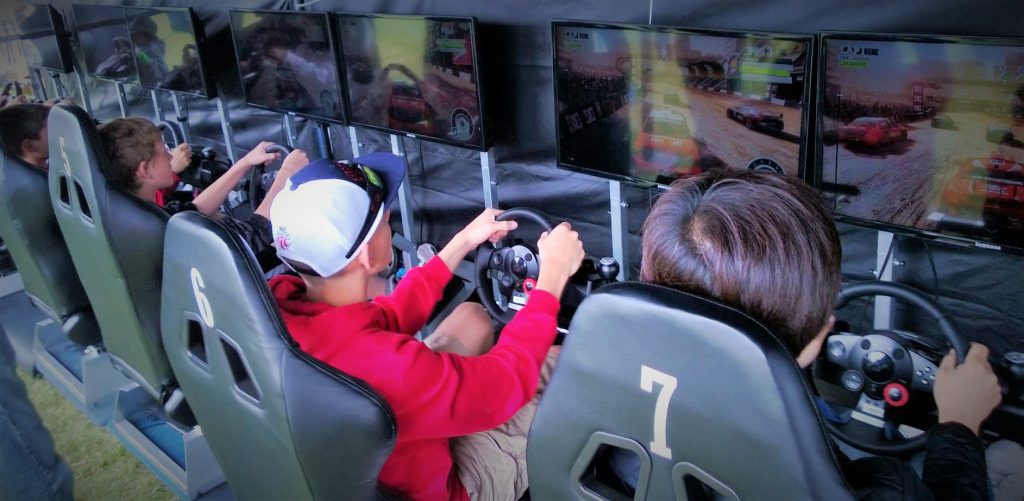

Comments